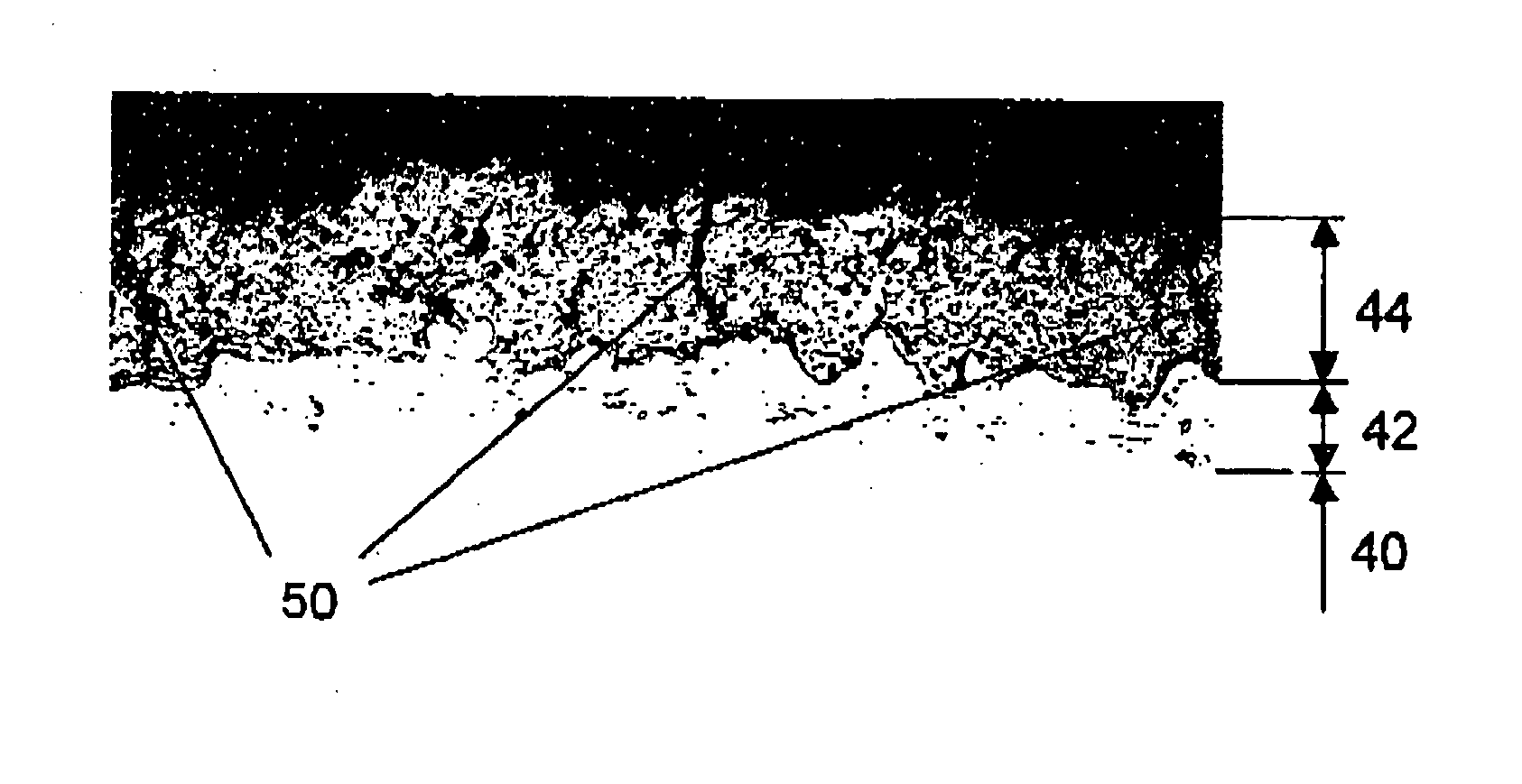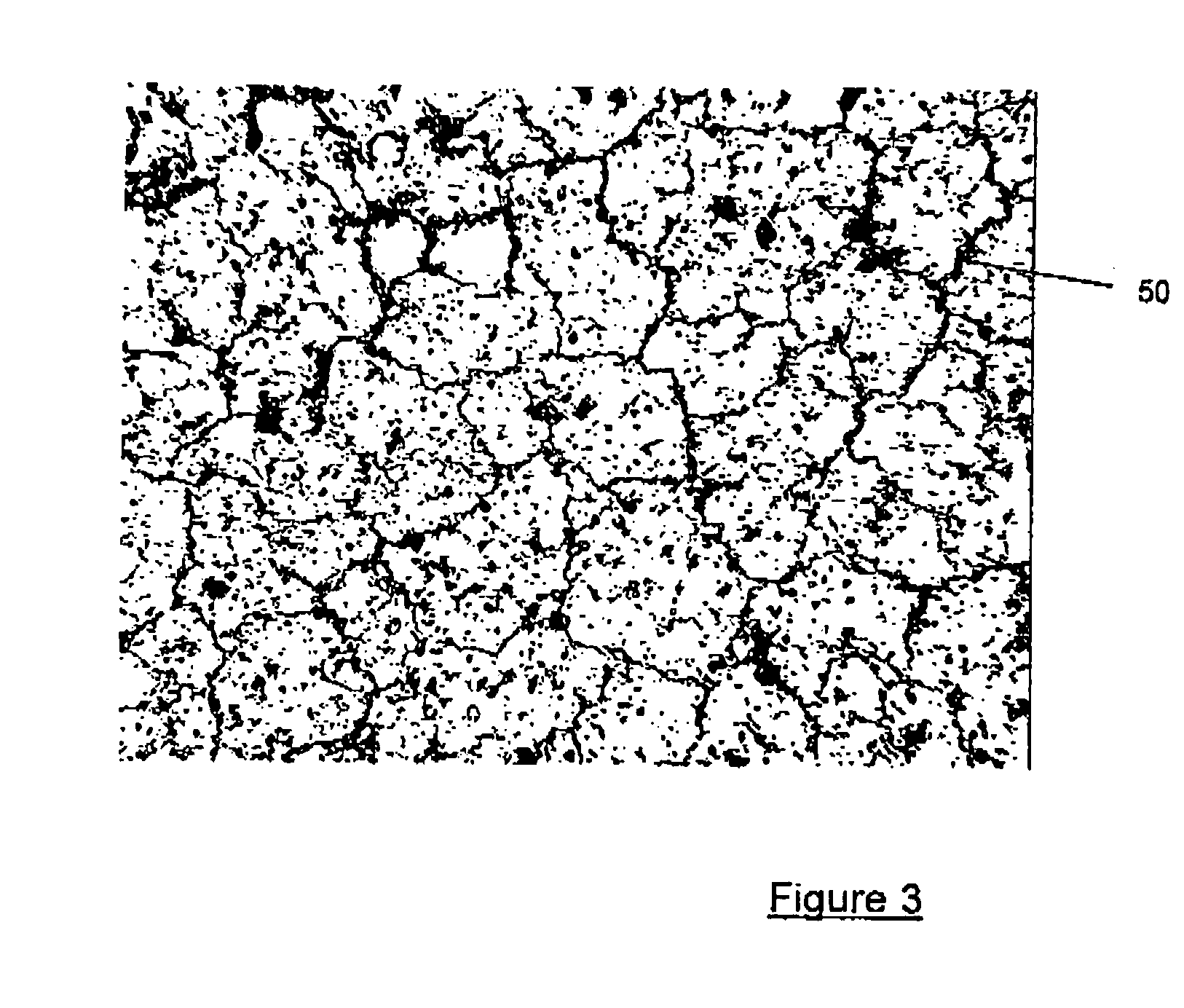Process for obtaining a flexible/adaptive thermal barrier
- Summary
- Abstract
- Description
- Claims
- Application Information
AI Technical Summary
Benefits of technology
Problems solved by technology
Method used
Image
Examples
Embodiment Construction
Reference will firstly be made to FIG. 1.
The component to be coated with a thermal barrier is a turbine blade 10 made of a nickel-based superalloy with directional solidification. The thermal barrier comprises an MCrAlY sublayer covered with a 125 μm ceramic layer made of zirconia ZrO2 with 8% yttria Y2O3.
The airfoil 12 of the blade 10 is covered with an MCrAlY sublayer deposited using the standard processes.
The blade 10 is then held by its root 14 on a rotary assembly 20 capable of making the blade rotate about its axis 16, that is to say about itself, in the length direction, the airfoil 12 being presented in front of a plasma torch 30, the jet of which is denoted by 32. The plasma torch 32 here is the F4 model sold by the company whose registered name is Sultzer Metco.
The torch is placed at 50 mm from the blade 10, the blade 10 then being rotated about its axis 16. The torch 30 is turned on and the jet 32 firstly touches the tip 18a of the blade 10 and moves progressivel...
PUM
| Property | Measurement | Unit |
|---|---|---|
| Thickness | aaaaa | aaaaa |
| Mass | aaaaa | aaaaa |
| Mass | aaaaa | aaaaa |
Abstract
Description
Claims
Application Information
 Login to View More
Login to View More - R&D
- Intellectual Property
- Life Sciences
- Materials
- Tech Scout
- Unparalleled Data Quality
- Higher Quality Content
- 60% Fewer Hallucinations
Browse by: Latest US Patents, China's latest patents, Technical Efficacy Thesaurus, Application Domain, Technology Topic, Popular Technical Reports.
© 2025 PatSnap. All rights reserved.Legal|Privacy policy|Modern Slavery Act Transparency Statement|Sitemap|About US| Contact US: help@patsnap.com



